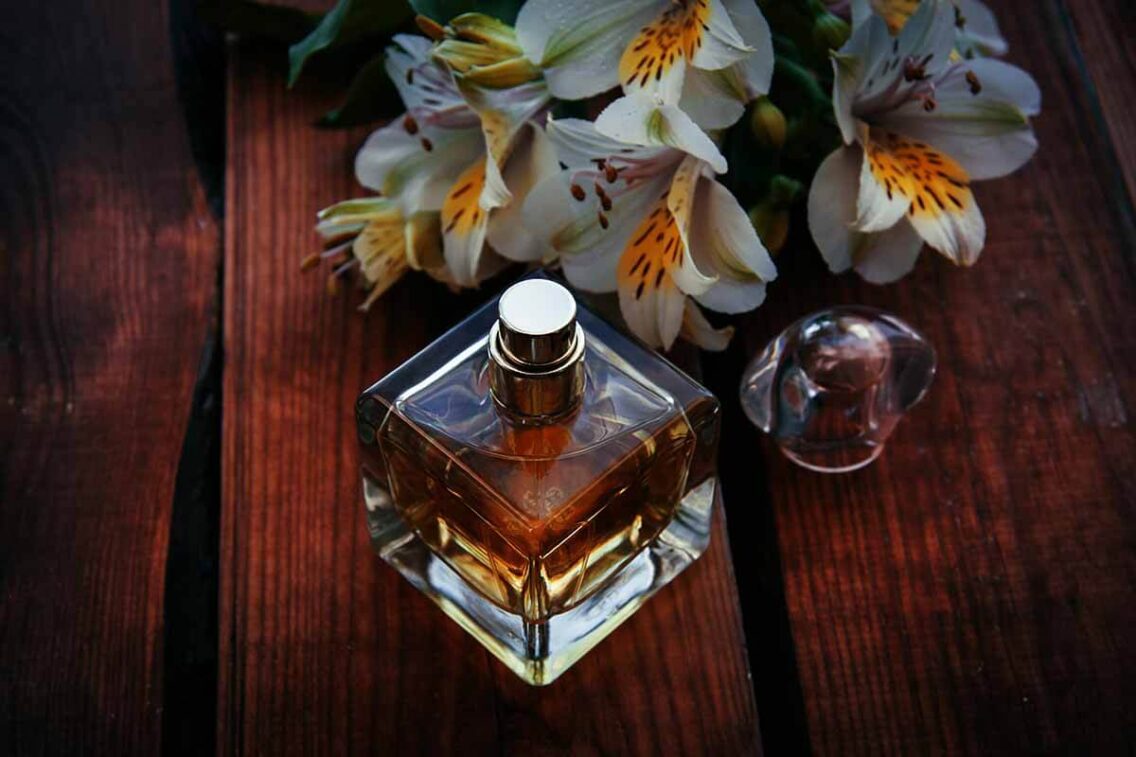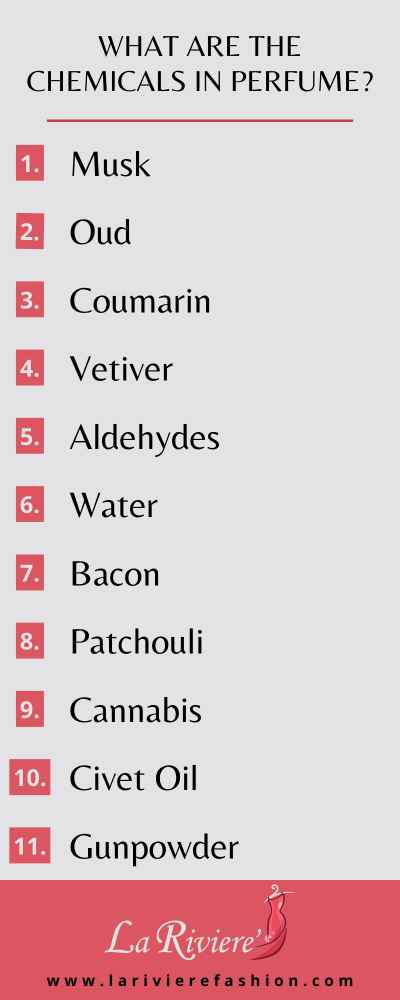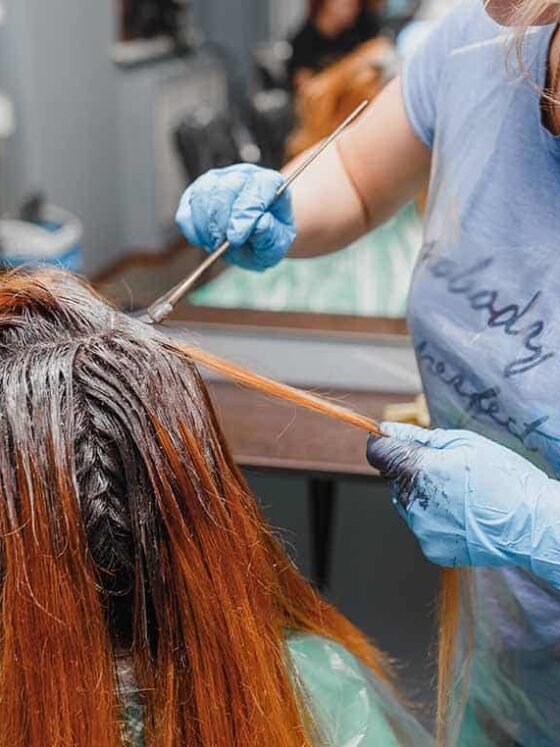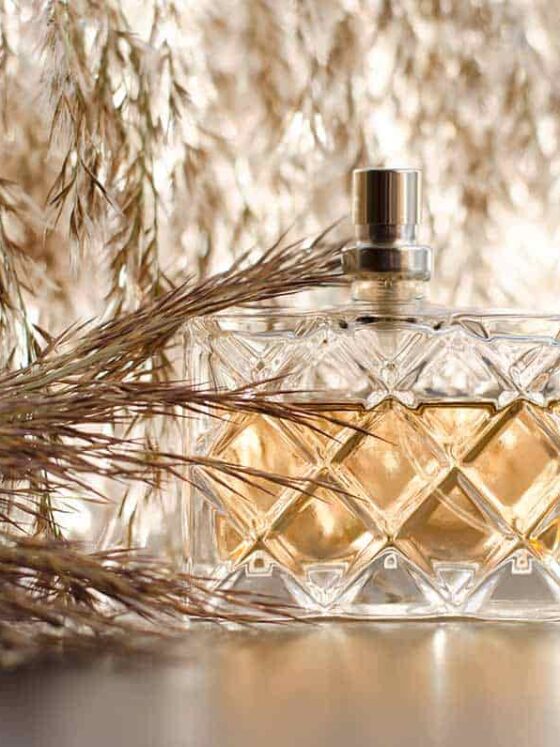What Ingredients Are in Perfume?

Perfume has been a popular fashion accessory in the world for centuries, but the ingredients that make up this popular scent are somewhat mysterious to anyone who doesn’t make it. The ingredients included in a perfume recipe can have a huge impact on the layers of scent included in the fragrance.
Perfume is made up of ethanol and water mixed with a variety of essential oils and chemicals that contribute to the perfume’s scent. These chemicals are often derived from animal or plant products, and can also be produced synthetically.
Perfume ingredients span the gamut from gunpowder to vetiver, and everything in-between. Read on to learn more about a few common ingredients found in perfume and how they contribute to the perfume’s scent.
What Is the Main Ingredient for Perfume?
You might think that the main ingredient for perfume is one of the many essential oils used to scent it, but you’d be wrong. The main ingredient for perfume is actually ethanol, also known as the “perfumer’s alcohol.” Ethanol typically makes up 80% to 90% of most perfumes.
So why is ethanol used in the manufacture of perfume?
- Solvent properties: Ethanol is used in perfume manufacturing to help dissolve the oils used to scent the perfume and make the fragrance go further when applied to the skin.
- Chemically stable: Unlike some other types of alcohol, ethanol is considered chemically stable. This stability ensures that it is unlikely to have a negative chemical reaction with any other essential oils or ingredients added to the perfume. It also means that it’s less likely to cause skin irritation in people who wear it.
- Cheap and easy to produce: As far as practicality goes, ethanol is the easiest type of alcohol used in perfume manufacturing because it can be easily produced in-house and doesn’t cost much compared to other types of alcohol.
- Neutral smell: Unlike other types of alcohol, which have a distinctly sharp chemical scent, ethanol has a completely neutral smell that doesn’t affect the other fragrances used in the perfume.
Even though ethanol doesn’t contribute to the smell of perfume, it still makes up the largest part of almost any perfume formula and is considered a big no-no when it comes to wearing it during a spray tan.
What Is the Most Expensive Ingredient in Perfume?
Ambergris, also known as amber grease or gray amber, is a waxy substance that is derived from the intestine of sperm whales.
While fresh ambergris doesn’t smell good at all (it has a rank scent of saltwater and fecal matter) it develops a sweet, earthy scent as it ages that is considered one of the best base notes in perfume manufacturing. It also helps stabilize perfume formulas, making the scent of the perfume last longer on the wearer’s skin.
The extreme cost of natural ambergris makes it a rare perfume ingredient. Ambergris is sold for upwards of $40,000 a kilogram, making it easily the most expensive cosmetic product in the world.
Some of The 5 Best Luxury Perfumes for Her contain this expensive ingredient in their formula. Check the article to explore this luxurious perfumes!
What Are the Chemicals in Perfume?
There are over 3,000 chemicals used in perfume, but there are a few common (and uncommon) chemicals that can be found in many different formulas. These are just a few popular ingredients that you can find in perfume.
 1. Musk
1. Musk
Musk is one of the oldest chemicals used in perfume and was originally created by removing scent glands from certain animals, such as musk deer. This fragrance was refined by boiling these animal scent glands in hot oil.
While musk came from animals back in the day, conservation efforts in the modern world have led most perfumes that use musk to resort to synthetic manufacturing to produce the scents traditionally produced by animal products. This has made musk-based perfumes much more common on the market as well.
Along with synthetic musk, there are also several botanicals commonly used to act as musk substitutes in perfume manufacturing. Some of the plants used to produce musky scents in perfume are as follows:
- Garden angelica
- Musk flower
- Abelmosk
- Amaretto seeds
Musk is usually used as a base note in perfume formulas, helping to ground the scent and give it a deep, masculine vibe.
2. Oud
Oud is another word for the oil extracted from the fungus-invested heartwood of the agar tree. In the ancient world, this fragrant heartwood was commonly burned as a form of incense. This ancient perfume ingredient is even mentioned several times in the Old Testament of the Bible, making it one of the oldest perfume ingredients in human history.
This substance, also known as agarwood, is only found in the wild in central and Southeast Asia. Oud is only found in 2% of all agar trees.
Like ambergris, naturally-sourced oud is one of the less common ingredients found in perfume, but it is a popular base note in fragrances. Unlike other base notes, which can have an earthy scent, Oud adds a sweeter note to fragrances.
3. Coumarin
For perfumes that have a little lighter fragrance profile, coumarin is a common chemical ingredient. This chemical gives off a vanilla scent with grassy notes and can be found in several botanicals such as tonka bean, lavender, sweetgrass, and sweet clover.
One of the interesting things about coumarin is that the profile of the scent changes depending on how much of the chemical is used in a perfume. In larger amounts, coumarin gives off notes of tobacco and its sweeter vanilla scent. This quality makes it a great ingredient for balancing out masculine perfumes.
4. Vetiver
Vetiver is a popular botanical chemical that is used in perfume formulas, and this ingredient is what causes many perfumes to have an earthy, woody scent.
Unlike other perfume ingredients, which may smell relatively consistent, vetiver can smell radically different depending on its origin. Vetiver that is collected from Haiti has a clean and airy scent, while vetiver collected from Java has a deeper, smokier profile.
Vetiver is a masculine scent that is popular in men’s perfumes and cosmetics, containing notes of tobacco, cut grass, balsam, and leather.
5. Aldehydes
Aldehydes include a wide range of different chemicals formed by the partial oxidation of alcohols. Even though many aldehydes are synthetically produced in perfume manufacturing, many aldehydes can also be found in natural botanicals. Some of these aldehyde sources include the following
- Rose
- Citronella
- Cinnamon
- Orange oil/peel
Aldehydes are capable of imparting a variety of scents on a perfume formula depending on which specific aldehyde is used. Here are some of the most common aldehydes and the scents that they are associated with:
- Heptanal – Sage, earth
- Octonal – Oranges
- Nonanal – Roses
- Decanal – Orange rind
Since aldehydes can encompass several different scent profiles, these chemicals are a versatile ingredient when it comes to perfume formulas. Aldehydes are typically used to “sharpen” a perfume’s scent profile and clarify the individual notes it contains.
6. Water
Most people wouldn’t think of water as an ingredient in perfume, but water is included in almost every perfume formula. When used in perfume, water as an ingredient has two basic functions:
- Scent release: Using water in a perfume formula helps the scent be released more easily. Alcohol tends to hold the fragrance of perfume rather than disperse it, so water is included to help make the perfume smell stronger and spread on the air.
- Skin care: Pure alcohol can be harsh on the skin, which is bad news for perfumes. However, adding a percentage of water to the formula can make perfume much easier on the skin after it’s applied.
Water may seem like a bland ingredient in perfume compared to exotic inclusions like vetiver and oud since it is neutral and doesn’t contribute to a perfume’s scent profile on its own. However, it’s an important addition to any perfume formula to ensure that the perfume has staying power.
7. Bacon
If you think that bacon is an odd ingredient for perfume, you’d be right. However, bacon also helps lend a spicy and smoky scent to perfumes as well as body washes and other cosmetic products.
While bacon seems like it might be an overpowering choice for a perfume ingredient, it is often paired with other more traditional perfume scents such as cedar and grapefruit.
8. Patchouli
Patchouli has an almost instantly recognizable scent compared to other perfume ingredients. With a scent that has a strong, sweet scent that verges into earthy and musky territory, it is a popular addition in many different styles of fragrances. Patchouli is extracted from the patchouli plant
Patchouli isn’t just used to scent perfumes. Patchouli can also commonly be found in other scented products such as candles and incense. Along with ambergris, patchouli is a perfume ingredient that is used to help stabilize and “fix” perfume profiles.
Patchouli is used as a base note in fragrances, which means that this spicy scent is usually the last scent you smell in a perfume that contains it. Patchouli is most often paired with other earthy scents such as frankincense and myrrh, but it can also be used to help balance out sweeter fragrances such as vanilla.
9. Cannabis
While the scent of cannabis is somewhat controversial, this plant has gained popularity recently as a chemical ingredient in perfumes. Like patchouli, cannabis is able to impart an earthy, spicy base note to perfume profiles. As expected, the smell of cannabis as an addition to perfume gives the formula a grassy, almost sour nuance compared to other ingredients.
Cannabis is often paired with other spicy perfume ingredients such as citrus and woods like cedar to give the scent a little more balance.
Since cannabis was legalized in much of the United States, more fragrance manufacturers are looking to use the byproducts of its production in other manufacturing applications. The strong scent of cannabis made it a great candidate for the perfume industry.
10. Civet Oil
Similar to regular perfume musk, civet oil (also known as civet musk) is traditionally extracted from the scent glands of an animal. In this case, the animal that contributes the musk is the civet cat, a small animal from southwestern China and Southeast Asia.
Unlike other types of musk, which can be effectively synthesized in the lab, most perfumers prefer real civetone, the chemical in civet musk that gives the oil its floral scent. The smell of civet oil is pungent in its paste form, but once it has been dissolved in ethanol, it develops a more delicate fragrance.
The use of civet oil as a perfume ingredient is somewhat controversial due to welfare issues with the animals kept in captivity for their musk. For this reason, many perfume wearers avoid perfumes that contain civetone.
11. Gunpowder
It might seem like an odd addition to a perfume, but as a perfume ingredient gunpowder can add a spicy, peppery scent to any perfume profile. Gunpowder is formed from a combination of charcoal and sulphur, and can help give perfume the smoky scent of a freshly-fired weapon. (Source: Byrdie)
Even though you might associate gunpowder with masculine fragrances, this perfume ingredient is often included in feminine scents to help counter the floral notes contained in them.
Perfume Ingredients Give Perfume Their Signature Notes
Most perfumes have the same two basic ingredients included as their foundation – ethanol and water. It’s the wide variety of other ingredients added to this base mixture that create such a complex range of different fragrance profiles.
Before you head on straight to buy any perfume, check out The 10 Most Popular Women’s Perfume Right Now!

 1. Musk
1. Musk






